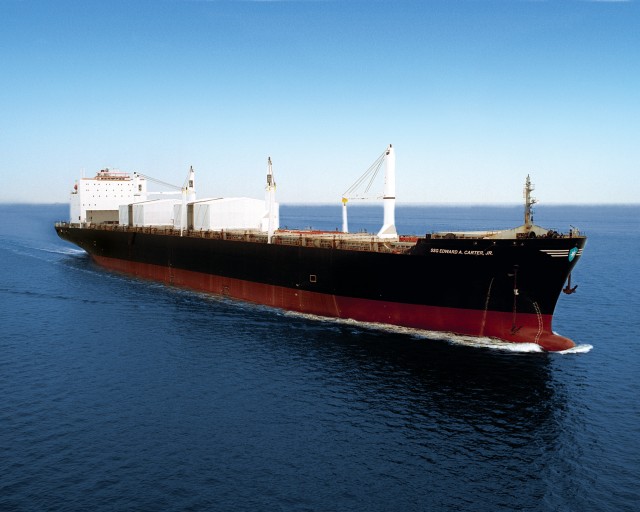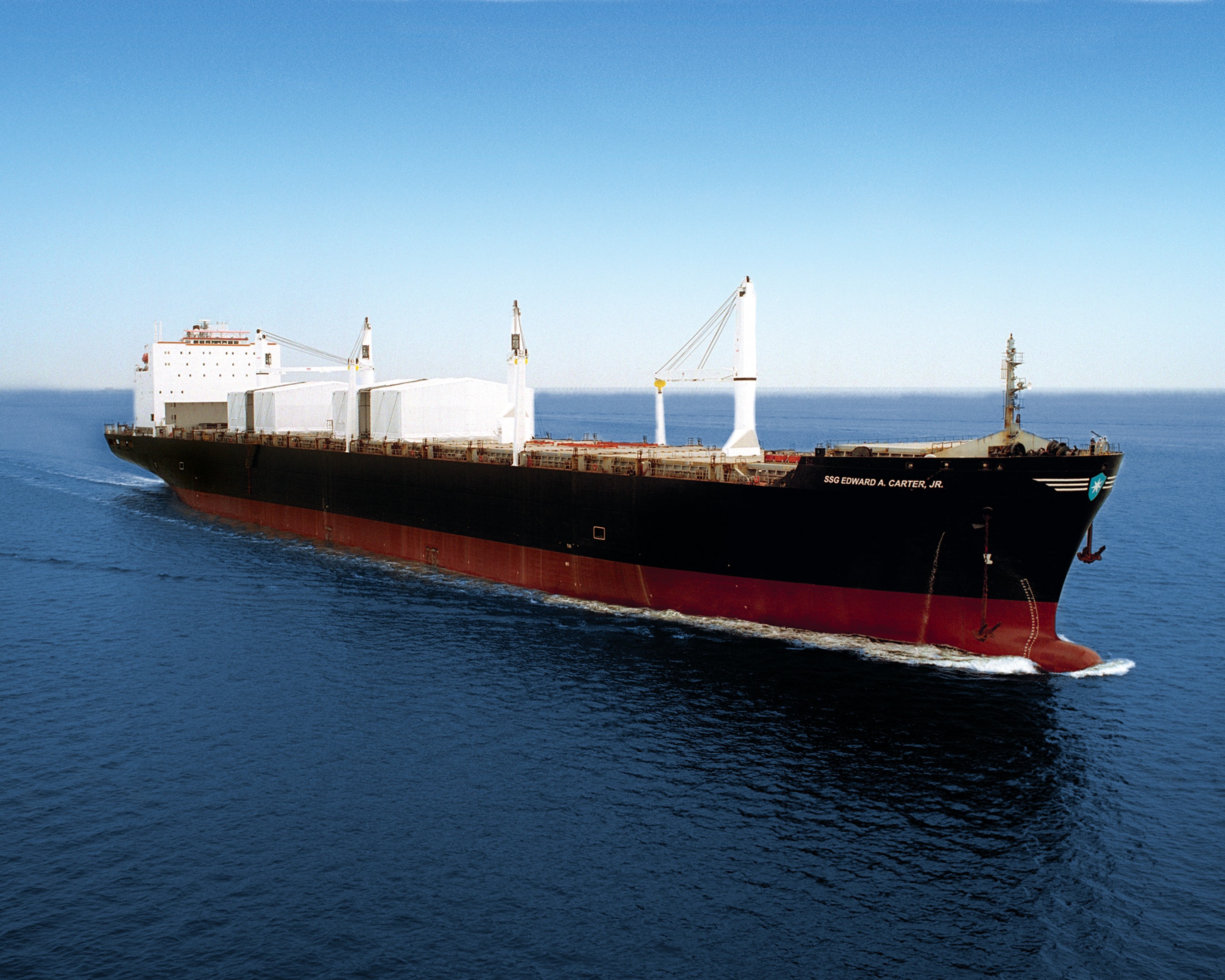Longer than three football fields, the M.V. Staff Sgt. Edward A. Carter Jr., is a seagoing insurance policy.
Loaded aboard the massive vessel are more than 2,000 containers of munitions, part of the Army Prepositioned Stocks -- afloat mission to sustain expeditionary Army forces, wherever and whenever they may engage.
"Ammunition is what makes our Army a fighting force," said Rick Hale, Ammunition Team lead in Army Sustainment Command's Army Prepositioned Stocks Directorate at Rock Island Arsenal, Ill.
The Carter is due in to port at Military Ocean Terminal Sunny Point, N.C., this month to download, refit, then upload more than 20,000 tons of munitions ranging from rifle bullets to air defense missiles.
"When we send the Carter back out to its maritime station, it will be carrying an even more lethal load than before," Hale said.
Efforts to maximize the ship's load have been ongoing and successful.
"Prepositioned munitions stocks come from a variety of sources and commands, all facing pressure to keep up the flow to combat forces," Hale said.
Putting some away for a rainy day is a challenge, he noted, but essential to preserve the Army's ability to meet contingencies.
"We've worked with the Army G-4, U.S. Army Materiel Command, Joint Munitions Command, Aviation and Missile Life Cycle Management Command and a host of supporting organizations and agencies to substantially increase our fill rate aboard the Carter," Hale said.
Maj. Gen. Robert M. Radin, commanding general of ASC, called the improved fill rate a major improvement in readiness. The Carter's increased effectiveness ripples beyond the obvious support to Soldiers on the ground.
"Keeping munitions aboard ship, ready to sail to trouble spots, is by far the cheapest, most effective way to sustain expeditionary forces," Hale noted. "Improvements to the Carter's load reduce airlift requirements by up to 35 C-17 aircraft, saving millions of dollars -- not to mention easing the strain on air assets."
The Carter's turnaround will take about three months, during which time a complex, coordinated effort will move mountains of high-explosive cargo.
"Safety is always uppermost in our planning and operations," Hale said. "From the stevedores laboring on the docks to the port operations managers and ammunition quality assurance and surveillance specialists, we're all alert to the dangers of handling munitions."
Once the entire ship is downloaded, the cargo will undergo serviceability inspections, containers will be inspected and recertified, inventories will be made and a new load plan configured.
"It's like a puzzle coming together," Hale said. "Months, even years, of planning all take form as the operation unfolds."
When the download is complete, the workforce changes gears to carry out the massive, but delicate task of putting aboard thousands of containers filled with live rounds. Army Reserve Soldiers play a major role in operations, providing specialized manpower, while certifying their training requirements. It's a win-win situation.
Spring will be in the air when the Carter sets sail, carrying its lethal cargo.
"Even knowing it's out there may deter an enemy," Hale said. "And if the day comes we have to download the cargo into combat, our Soldiers can count on us when they pull the trigger, yank the lanyard or push the launch button."
Related Links:
The man behind the ship's name: Army Staff Sgt. Edward A. Carter


Social Sharing